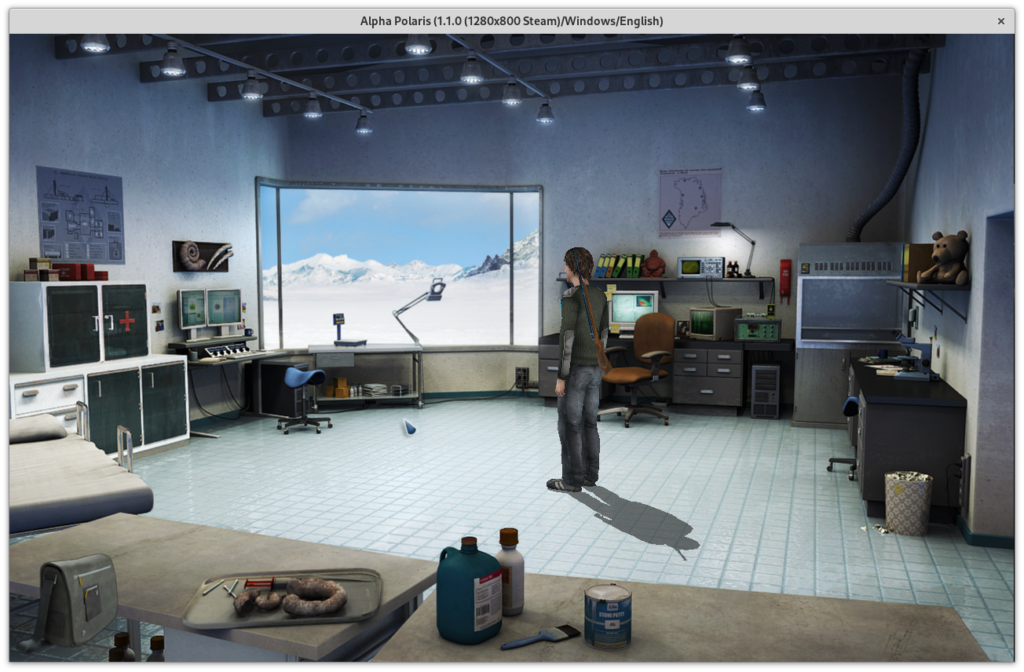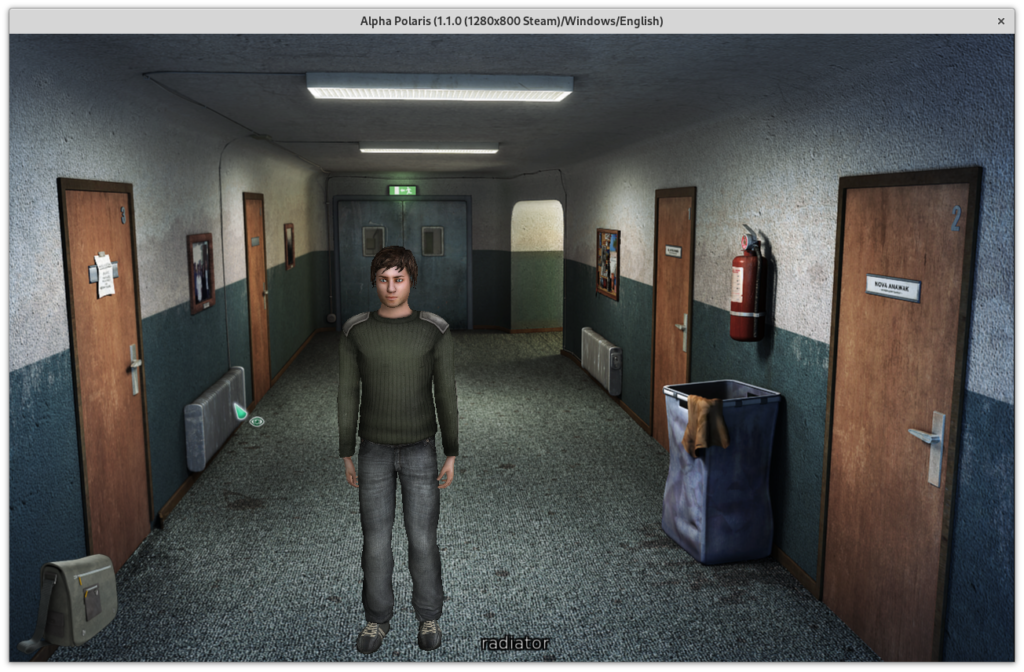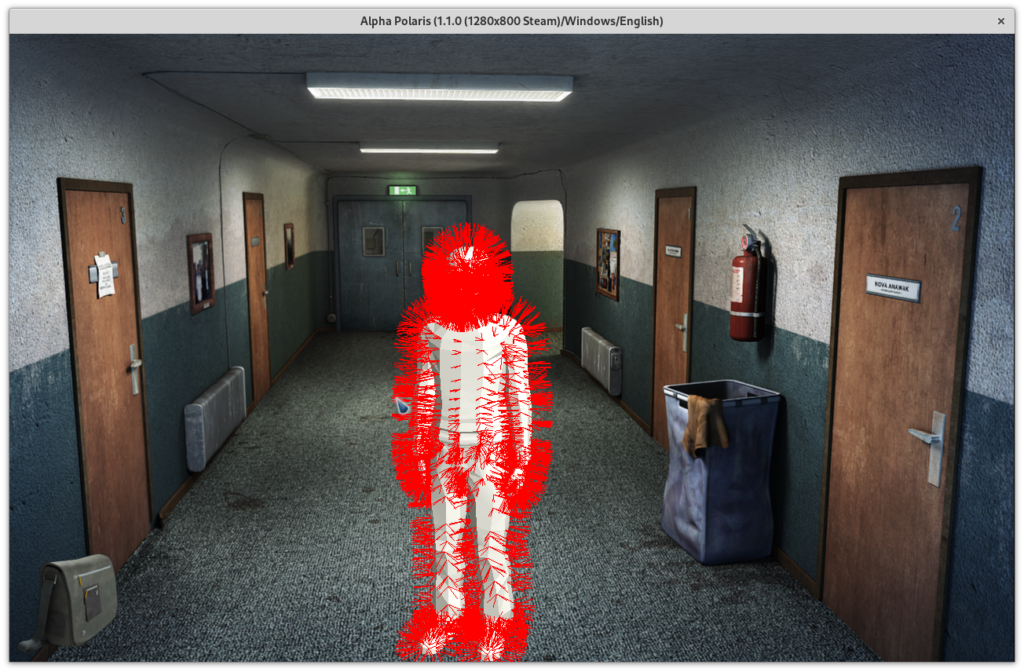Now we can render our WME games even with shaders. The most work was actually related to setting up the surrounding code and not so much the actual shaders (minus the one which is responsible for rendering .X models). At the moment, things are somewhat unorganized however and the current code should be refactored, interfaces improved and common code factored out. I would claim that at the moment one can see the fact that WME was designed for the old fixed function pipeline and that the addition of the shader renderer is not completely straight forward. In contrast changing from Direct3D to OpenGL was easier, the only real change that I made was using the OpenGL matrix stack, which now turned out to perhaps been the wrong direction. Well, it can be reimplemented (and is so at the moment), but the old WME code didn’t rely on it either, so I might change this back.
I hoped that lighting done by shaders would produce the same results as the original code but this is not the case.
 Let me just assure you that Rune is not supposed to look like he is almost getting sick. Apart from that though, things seem to look just fine.
Let me just assure you that Rune is not supposed to look like he is almost getting sick. Apart from that though, things seem to look just fine.



